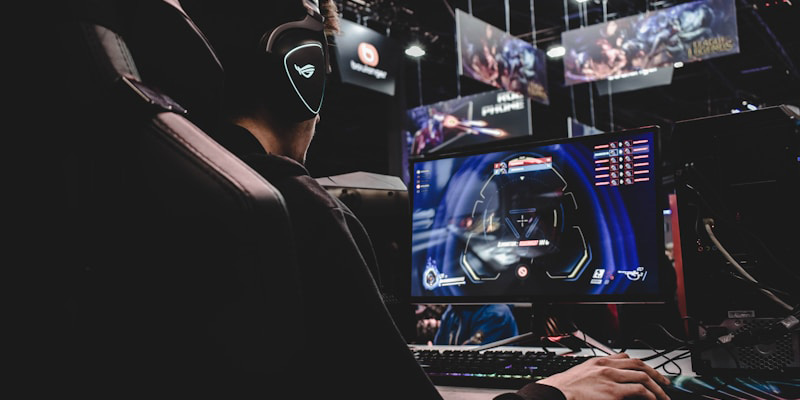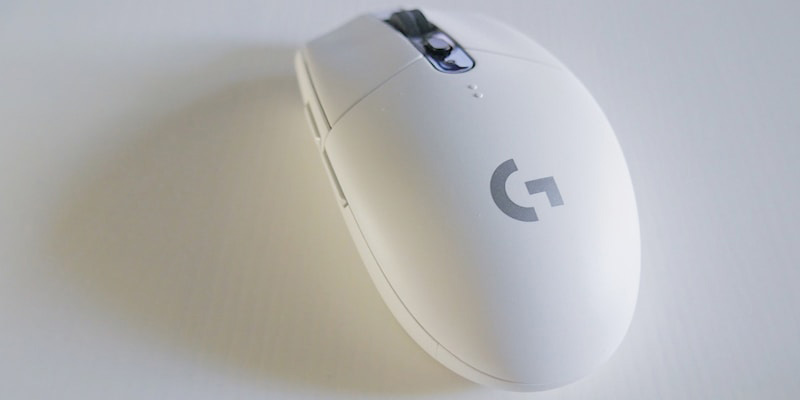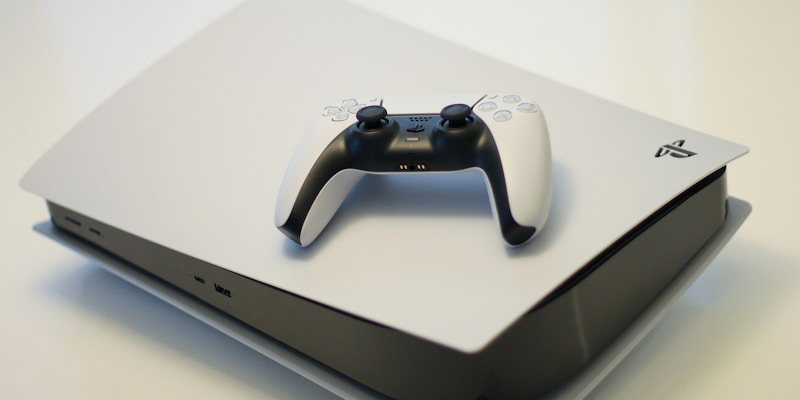Ready to Rival? Let's Talk Controls!
Ever felt like your hero isn't quite listening? Or that you're a split-second too slow on the draw in those clutch moments? Chances are, the controls could be the culprit. In a fast-paced hero shooter like Marvel Rivals, where milliseconds decide engagements, a comfortable and efficient control scheme is not just a preference—it's fundamental to reaction time, precise ability usage, and overall game sense. Mastering controls is the bedrock of high-level play, the first crucial step on the path to victory.
This guide is designed to cut through the noise and deliver the essentials for dominating in Marvel Rivals Patch 1.x. It will cover the default keyboard and mouse (KBM) setups, standard controller layouts, and then dive into pro-level tweaks for both input methods. Furthermore, it will explore quick-swap tips for characters and general hero management, all tailored to help players harness their full potential. The game is constantly evolving, and this guide takes into account the latest updates, including new detailed deadzone customization options introduced in Patch 1.x, ensuring the information is current and actionable.

Keyboard & Mouse Command Center
For KBM warriors, precision and speed are the names of the game. A well-configured setup can transform a player's digital cockpit into a high-performance machine.
Default KBM Layout
Understanding the standard Keyboard & Mouse (KBM) controls is the first step. Marvel Rivals employs a familiar layout for most actions.
For Movement, the defaults are W (Forward), S (Backward), A (Left), and D (Right). Spacebar handles both Jump and Ascend, while Left Ctrl is used for Descend. This WASD setup is a long-standing convention in PC gaming, offering an intuitive feel for most players.
When it comes to Weapons, Left Click executes the Primary Attack and Right Click the Secondary Attack. Numerical keys 1 and 2 select Primary and Secondary Weapons respectively. The Mouse Scroll Wheel (Up for Next, Down for Previous) also cycles through weapons, and R is the standard for Reload.
Abilities are generally clustered around the movement keys. E is typically Ability 1, Left Shift is Ability 2, and F is Ability 3. The Ultimate Ability is most often bound to Q. A Melee Attack is assigned to V by default. Some sources also list G as a potential Ability 2 binding, showcasing slight variations or character-specific defaults.
Team-Up Abilities utilize Z, X, and C for their respective slots. Essential Hero and UI controls include H to Change Hero mid-match (during respawn or in the starting area) and Tab to display the Scoreboard.
Optimal KBM Tweaks & Pro Tips
Defaults are fine for learning, but optimal is for winning. Fine-tuning KBM settings can lead to peak performance.
Smarter Movement: Ascend/Descend Rebinds
The default configuration of Spacebar for both Jump and Ascend, with Left Ctrl for Descend, can sometimes feel clunky, especially for characters with significant aerial mobility or during intense vertical combat. Sharing Space for two distinct vertical movements can lead to accidental actions or a less precise feel. Furthermore, L-Ctrl can be an uncomfortable stretch for the pinky finger for some players, potentially slowing reactions when a quick descent is needed for evasion or repositioning. This is particularly relevant for flying characters who need fluid up-and-down control.
Faster Firepower: Reloading and Weapon Swapping
Relying on R for Reload and the mouse scroll wheel or number keys (1, 2) for weapon switching can be suboptimal. These actions might momentarily take fingers off crucial movement keys or simply be slower than alternatives. Assigning Reload to Mouse Button 4 (often a side thumb button) can make reloading significantly faster, as the right thumb can activate it without affecting aim or left-hand movement. For weapon switching, using Q and E (if they aren't primary ability keys for a specific hero) is generally quicker and more reliable than scrolling, especially if a mouse wheel is prone to malfunction or accidental scrolls.

Ability Hotkeys at Your Fingertips
The default V key for Melee Attack is often considered awkward to reach quickly during frantic close-quarters combat. A highly recommended tweak is to bind Melee Attack to Mouse Button 5 (another common side thumb button). This allows for almost instantaneous melee reactions without disrupting movement or aiming. Such reactive abilities benefit immensely from being on easily accessible mouse buttons.
| Action | Default Key | Recommended Pro Key | Rationale/Advantage |
|---|---|---|---|
| Movement - Ascend | Space | E / Mouse Button | Dedicated jump on Space; E is accessible. Mouse button for flyers offers intuitive up/down control. |
| Movement - Descend | Left Ctrl | C / Mouse Button | Easier thumb/finger access than L-Ctrl; Mouse button for flyers. |
| Weapon - Reload | R | Mouse Button 4 | Faster reloads without taking fingers off movement/ability keys. |
| Weapon - Switch | Scroll/1/2 | Q/E (if available) | Quicker and more reliable than scroll wheel; keeps weapon switching on left hand. |
| Ability - Melee Attack | V | Mouse Button 5 | Instantaneous reactions in close combat; V is awkward for many. |
| Scoreboard | Tab | Caps Lock | Avoids finger displacement from Tab; faster access during pressure moments. |
Mouse Sensitivity & Crosshair Settings
A player's mouse is their scalpel in the surgical theater of combat. Sharpening its settings is paramount.
Mouse Sensitivity: Finding Your Sweet Spot
Mouse sensitivity determines how much the in-game camera moves in response to physical mouse movement. Horizontal and Vertical sensitivity can often be tuned independently. Consistency is key for building muscle memory. While there's no single "best" sensitivity, as it's highly subjective and depends on factors like mouse DPI (dots per inch), playstyle, and even the size of a mousepad, a good starting range for many players in Marvel Rivals is a Horizontal and Vertical Sensitivity around 2.5 to 2.6.
Standard practice is to keep Invert Horizontal Look and Invert Vertical Look set to Off unless a player has a strong ingrained preference for inverted controls. Additionally, for the purest aiming experience, Mouse Smoothing and Mouse Acceleration should be turned Off to ensure raw, unfiltered input from the mouse.
Crosshair Customization
In the chaos of battle, a clear, visible, yet unobtrusive crosshair is vital. Marvel Rivals offers robust customization options. The slight variations in "optimal" crosshair settings found across different recommendations highlight an important principle: crosshair design is a balance between information and clarity.
| Setting | Recommended Value/Range | Notes/Rationale |
|---|---|---|
| Horizontal Sensitivity | 2.5 - 2.6 (adjust to DPI) | Balanced starting point; avoid excessively high values. |
| Vertical Sensitivity | 2.5 - 2.6 (adjust to DPI) | Keep consistent with horizontal or adjust slightly based on preference. |
| Mouse Smoothing | Off | Ensures raw mouse input for consistency. |
| Mouse Acceleration | Off | Ensures predictable mouse movement. |
| Reticle Type | Crosshair | Common and effective. |
| Width | 1 | Thin for precision. |
| Length | 7 | Common balanced length. |
| Center Gap | 0-1 | Small gap for precision, or no gap. |
Controller Mastery
Gamepad gurus, unite! While KBM often rules the roost in shooters, a well-tuned controller in Marvel Rivals can be a formidable weapon. Dialing in those settings is key.
Default Controller Layouts
Default controller layouts in Marvel Rivals generally adhere to conventions seen in other third-person shooters. Actions like Jump, Aim, Move, and firing Primary/Secondary weapons are typically mapped to familiar face buttons, triggers, and analog sticks.
A notable feature in Patch 1.x is the "New Player Initial Settings Feature" for console players. Upon first entering the game, new players receive a reminder of default sensitivity settings, vibration, and trigger effects. This is a helpful nudge from the developers, guiding newcomers towards crucial settings that can significantly impact their initial experience.
- Hero Profile: D-Pad Up
- Chrono Vision: D-Pad Right
- Ping Button: D-Pad Down
- Communication Wheel: 4 sections for basic comms

Pro Controller Setup
Default controller settings often represent a compromise designed for broad appeal rather than peak performance. Professional and experienced players invariably tweak these settings for maximum responsiveness and precision.
Sensitivity Secrets
Controller sensitivity is arguably the most critical setting to adjust. The general consensus is to increase sensitivity from the default values. Good starting points often cited are a Horizontal Sensitivity around 180 and a Vertical Sensitivity between 100 and 130. Some highly skilled players may push these values even higher, with recommendations sometimes reaching 200 for both horizontal and vertical, or in rare cases, exceptionally high values like 365/360, though such extremes are usually tied to very specific playstyles or advanced aim curve configurations.
Aim Sensitivity Curve Types
The Aim Sensitivity Curve dictates how stick input translates to camera movement speed.
- Linear Curve: Widely recommended as the initial choice, especially for players transitioning from other shooters. It provides a consistent 1:1 response—the camera moves directly in proportion to how far the stick is pushed.
- Dual Zone S-Curve: Gaining popularity among experienced players. Creates two distinct sensitivity zones: a smaller, inner zone with lower sensitivity for fine aiming and an outer zone where sensitivity ramps up significantly.
Deadzones: Eliminating Stick Drift
Deadzones determine how much the analog stick must be moved before the game registers input. Patch 1.x introduced several new deadzone settings offering unprecedented control:
- New Vertical Deadzone Sensitivity Settings
- Additional Sensitivity Acceleration Delay Settings
- Character Movement Stick Deadzone Settings
- Trigger Deadzone Settings
| Setting | Recommended Value/Range | Notes/Rationale |
|---|---|---|
| Horizontal Sensitivity | 180-220+ (Hero Dependent) | Increase from default; faster heroes need more. |
| Vertical Sensitivity | 100-170+ (Hero Dependent) | Often ~70-80% of Horizontal, adjust for comfort. |
| Aim Sensitivity Curve Type | Linear (Start) / Dual Zone S-Curve (Advanced) | Linear for consistency, Dual Zone for nuanced control. |
| Minimum Input Deadzone | 0-5 (Controller Dependent) | Increase if stick drift is present. |
| Aim Assist Window Size | 30-50 | Area where aim assist activates. |
| Aim Assist Strength | 80-100 | Intensity of aim assist. |
| Vibration | Off / Tactical | Off for competitive play; Tactical for subtle cues if preferred. |
Back Paddles & Smart Remaps
This is where controller players can significantly enhance their gameplay: smart button assignments, especially with pro controllers featuring back paddles. Standard controller layouts often force a compromise, requiring players to momentarily lift their thumb from the aim stick to press a face button for actions like jumping or using abilities.
| Action | Recommended Button | Rationale/Advantage |
|---|---|---|
| Jump | Back Paddle (Left or Right) | Allows aiming while jumping; crucial for mobility and combat. |
| Reload | Back Paddle | Faster reloads without taking thumb off aim stick. |
| Melee | Back Paddle | Quick melee access while maintaining aim. |
| Ping | Back Paddle / L3 | Faster, less disruptive communication. |
| Key Hero Ability | Back Paddle | Quick access to crucial abilities without sacrificing aim. |
Universal Game-Changers
Whether wielding a KBM or a controller, certain principles and practices apply universally to those aiming for the top tier of play in Marvel Rivals.
Hero-Specific Keybinds
Marvel Rivals allows players to set custom keybinds for each individual hero, a feature that is critical for optimizing performance across a diverse roster. For KBM users, this option is found in the settings menu, typically by selecting "All Heroes" and then choosing a specific character to modify their binds. Controller users have a similar pathway within the controller settings menu.
The ability to customize per hero is not just a convenience; it reflects the game's depth. Different heroes possess unique abilities, cooldowns, and playstyles that may not be best served by a generic, one-size-fits-all control scheme. For example:
Benefit immensely from having Ascend and Descend on highly accessible keys, potentially mouse side buttons for KBM users, to allow for fluid and precise aerial maneuvers while maintaining aim.
Hulk's powerful charged jump, a cornerstone of his mobility and engagement, might feel more intuitive and responsive if bound to Right Click rather than a standard ability key.
If Reload is moved to a mouse button, the Melee attack could be remapped from the default V to R for easier access during intense firefights.
Character Switching & Quick Actions
"Quick swap" capabilities in Marvel Rivals extend beyond just character-specific mechanics to include efficient UI interaction and in-match adaptability.
Cloak & Dagger's Unique Swap Mechanic
This duo features a core mechanic allowing players to switch between Cloak and Dagger. On KBM, this is typically bound to Left Shift, while on controller, it's the Right Bumper (RB/R1). An alternative approach some KBM players use is to bind "Next Weapon" to both Mouse Scroll Up and Mouse Scroll Down. This allows for rapid swapping without taking fingers off movement or primary ability keys.
Quick UI Access
Efficiently accessing information and communication tools is crucial for situational awareness and teamwork:
- Scoreboard: Tab is the KBM default. Caps Lock is an alternative that prevents finger displacement.
- Hero Changing: H is the default for KBM during respawn or pre-match setup.
- Ping System: Essential for non-verbal team communication. Ensure it's bound to an accessible key.
Troubleshooting Common Control Issues
Even with the best intentions, players might encounter control-related issues, especially on PC where hardware and software configurations are diverse. The prevalence of community discussions around certain problems, alongside official patch notes addressing some, indicates that achieving a flawless control experience isn't always a simple plug-and-play affair.
Mouse Drift / KBM-Controller Conflict
A frequently reported issue is mouse drift or erratic aim when using KBM, often caused by the game detecting simultaneous controller input, even if no controller is actively being used. This can be particularly problematic for users of peripherals like the Razer Tartarus keypad or Huntsman V2 Analogue keyboard, which may emulate controller inputs.
- Disable conflicting devices in Windows Device Manager
- Adjust Steam Input settings in game properties
- Physically unplug any actual controllers
- Check for interfering software like monitor management programs
- Update to Patch 1.x which includes fixes for raw mouse input issues
KBM "Fat Fingering" Issues
Players new to KBM, or those with smaller hands, might initially struggle with accurately pressing ability keys (like E, Q, F, Shift, Ctrl) while maintaining movement with WASD. This is a common hurdle. The primary solution is practice, which builds muscle memory over time. Using a gaming mouse with programmable side buttons can also alleviate this by offloading some ability or action binds to the thumb.
Microphone Not Working
A peculiar issue reported by some players is the in-game microphone randomly ceasing to function, potentially linked to switching heroes and the game's settings becoming confused. A specific fix involves:
- Going to keybinding settings
- Selecting "ALL HEROES"
- Deleting the existing push-to-talk (PTT) keybind
- Re-adding the PTT bind, ideally with a mouse button as primary
- Repeating this process for all individual heroes you use
You're All Set to Dominate!
Mastering your controls in Marvel Rivals is a continuous journey, not a one-time setup. This guide has laid out the default landscapes for both Keyboard & Mouse and Controller, delved into optimal tweaks favored by experienced players, and highlighted universal strategies like hero-specific binds and quick action efficiency. The core messages are clear: don't just stick with defaults if they feel limiting. Prioritize comfort, speed, and precision in your customizations. Experiment relentlessly in the Practice Range to find what truly clicks for each hero and your personal playstyle.
The tables provided offer solid starting points, grounded in community wisdom and pro preferences for Patch 1.x. But remember, these are blueprints, not rigid laws. You are the architect of your own control scheme. Don't be afraid to experiment, to iterate, and to forge a setup that feels like a natural extension of your intent.
Now, gear up, tweak those settings, and show the Rivals what you're made of! Good luck, hero!
